Cattedrale di San Cataldo
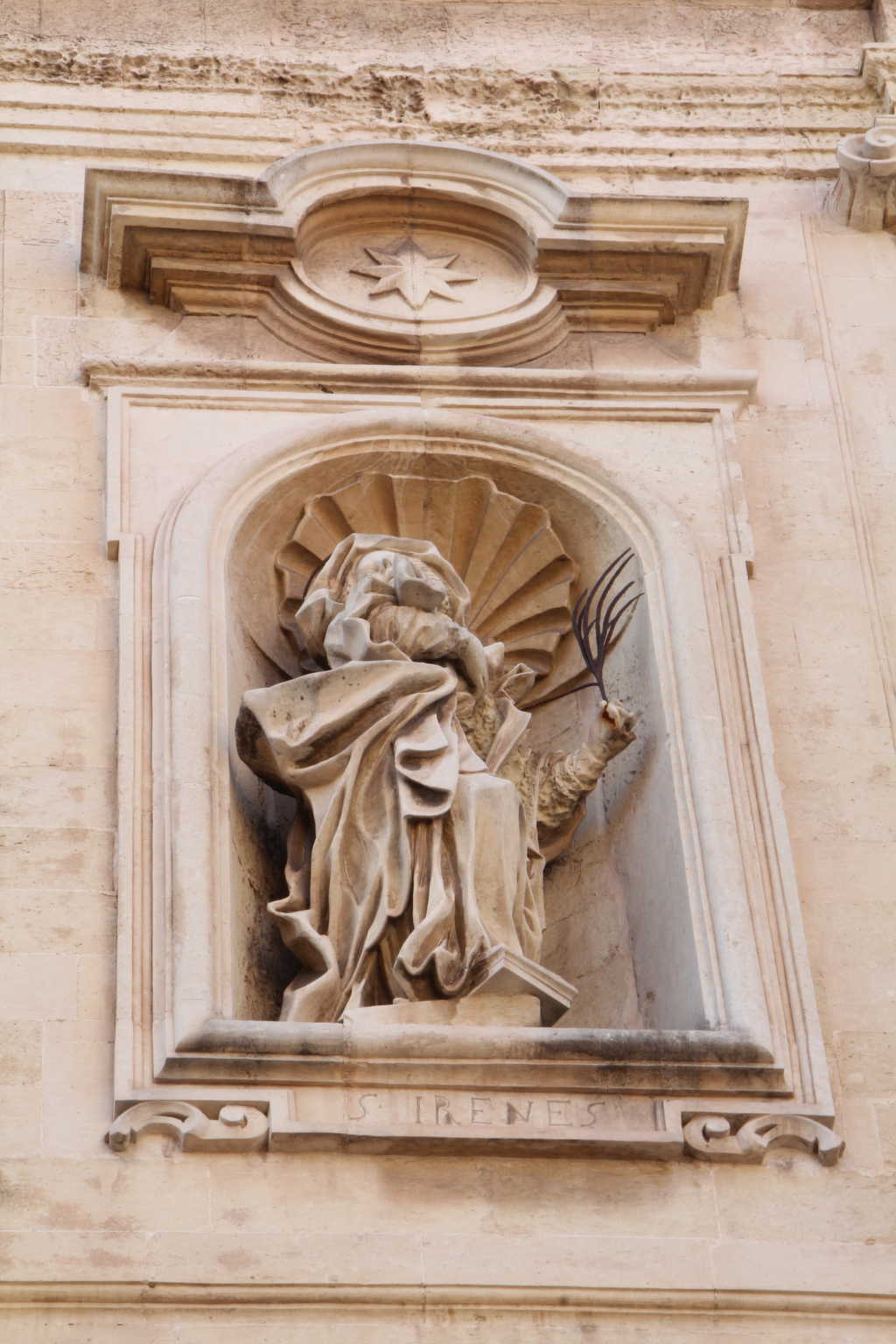
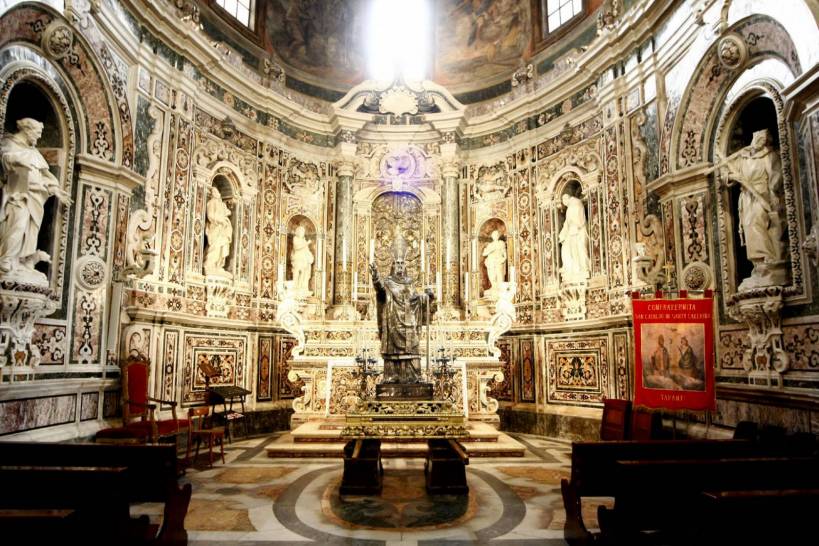
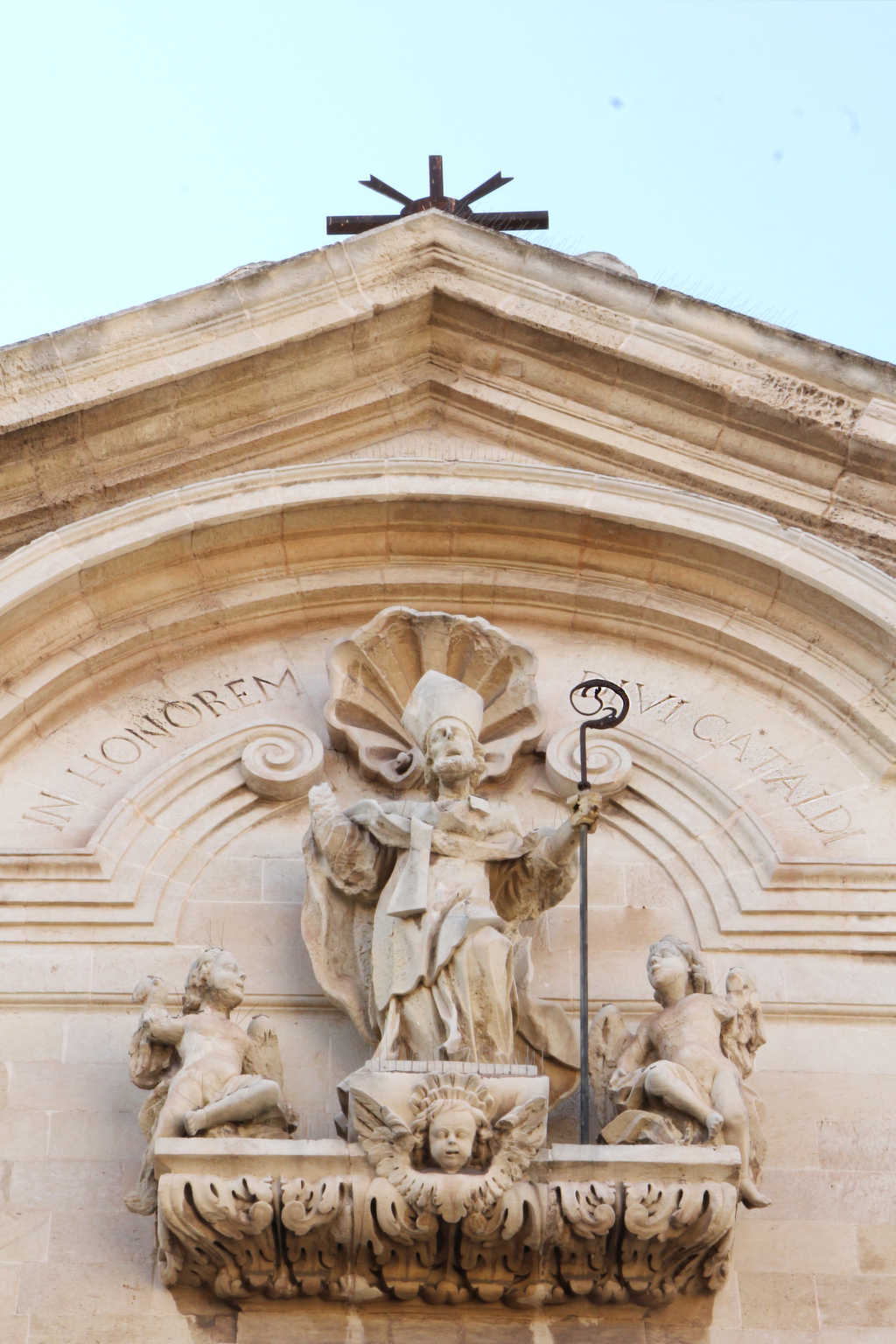
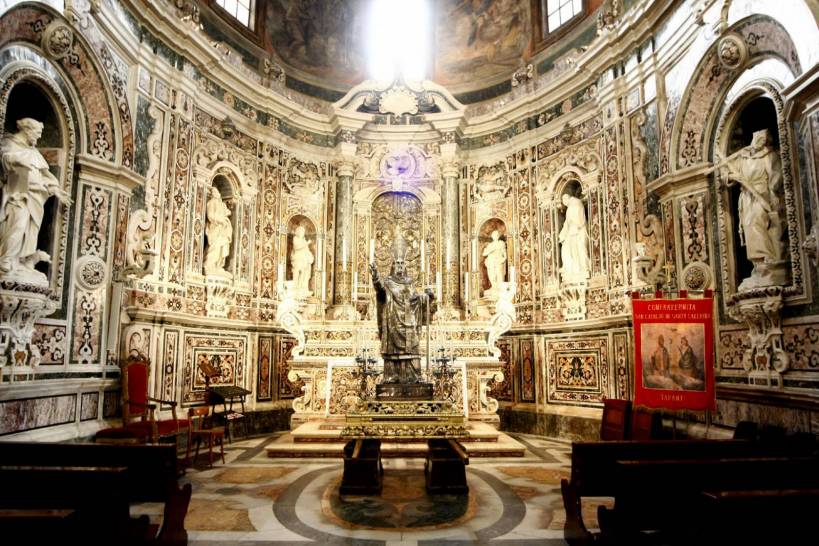
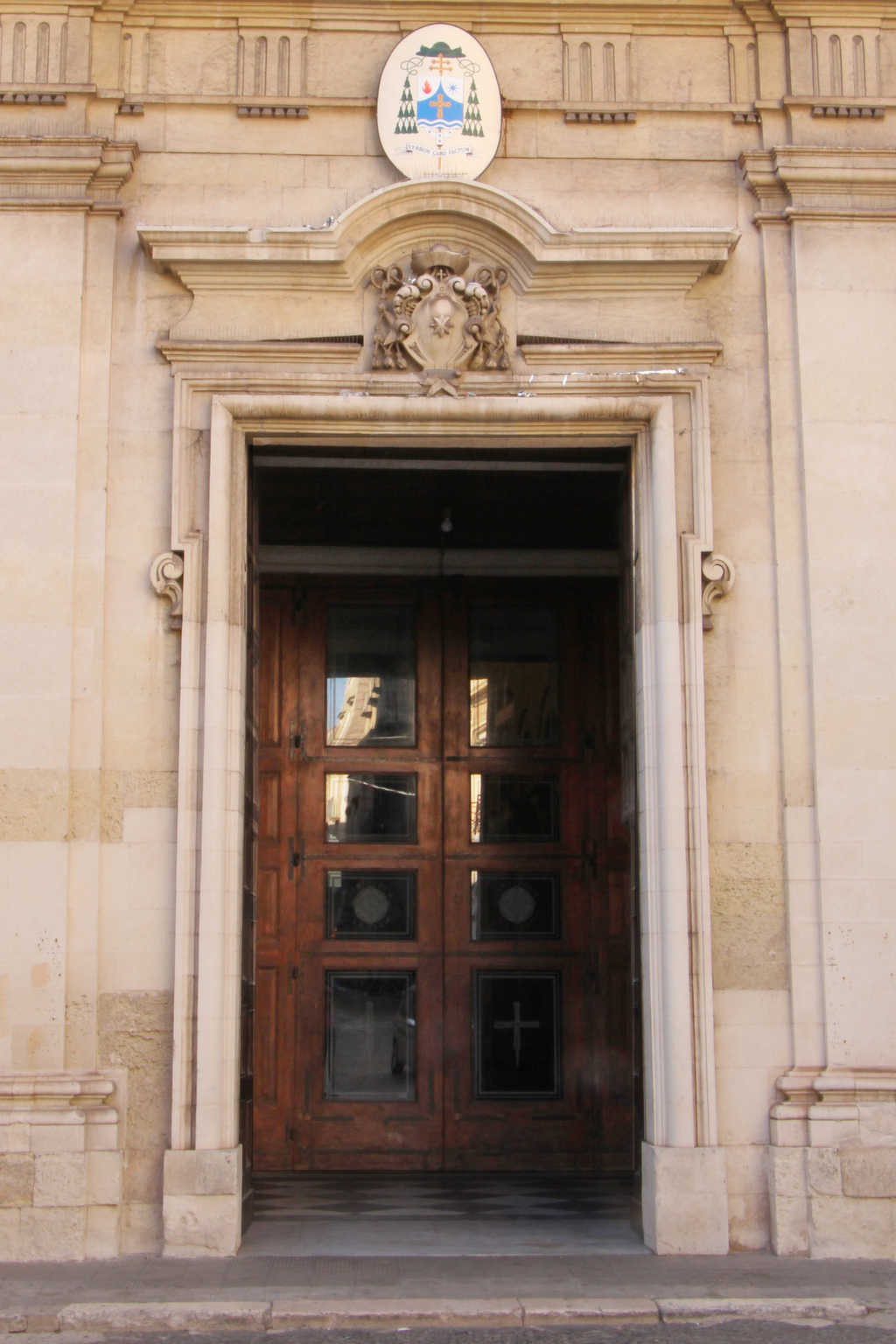
Cathedral of San Cataldo
Churches
In ancient times dedicated to Mary Magdalene and then to San Cataldo, the patron saint of the city, the Cathedral of Taranto is the oldest in Puglia. The first structure, perhaps already present in the 5th century AD. it was heavily remodeled in the 10th by the Emperor Nicephorus II Phocas and today it is the result of the many rearrangement and restoration works of the following centuries. Entering from the main portal open on the facade designed by Mauro Manieri in 1713 and passing the vestibule overlooked by the ancient baptistery, you enter the grandiose central nave characterized by the presence of ancient columns and capitals from the Greek and Roman period, with traces of the mosaic medieval flooring and a grandiose wooden and gold coffered false ceiling, embellished by the presence of the statues of the Assumption and of San Cataldo. The medieval mosaic, found in 1844 and attributed to a certain "Petroius", was made between 1163 and 1165 and takes up the theme of the Flight of Alexander the Great attested in various churches and cathedrals in Puglia.
Archaeological excavations carried out in the area have brought to light the remains of an interesting Lombard burial site dated between the seventh and eighth centuries. A.D. Behind the altar, surmounted by a valuable red porphyry ciborium on which the statues of the four evangelists were placed, commissioned by Archbishop Caracciolo in 1652, the eighteenth-century wooden choir opens. On the sides of the main altar there are two large chapels. On the left side the Chapel of the Blessed Sacrament decorated with the large seventeenth-century paintings by Molinari. The statues that decorate the curved profile marble altar are by Giuseppe Sammartino, known for being the author of the famous statue of the Veiled Christ in the Sansevero Chapel in Naples. On the right side of the main altar, preceded by a majestic metal gate, is the Baroque chapel of San Cataldo.
In the vestibule you can admire the beautiful marble statues depicting San Giuseppe with the Child and San Giovanni Gualberto both by Sammartino. The elliptical chapel is densely decorated with marble inlays, glass pastes, mother of pearl and lapis lazuli and houses an important series of statues (six of which are also by Sammartino). The frescoes celebrating the glory and wonders worked by San Cataldo are by Paolo De Matteis, an extremely active Baroque painter between the end of the seventeenth and the beginning of the eighteenth century. Inside the altar are the mortal remains of San Cataldo, discovered near the Baptistery in 1071, while in the niche with silver doors there is the statue, also silver, of the patron saint of the city.
Below the main altar is the crypt, dated to the 10th century and decorated with frescoes from various eras. In the entrance vestibule, the Florentine Renaissance bas-relief depicting a Madonna with Child and in the innermost hypogean environment the medieval sarcophagus, perhaps of a girl, probably dated to the 13th century, is valuable.
In ancient times dedicated to Mary Magdalene and then to San Cataldo, the patron saint of the city, the Cathedral of Taranto is the oldest in Puglia. The first structure, perhaps already present in the 5th century AD. it was heavily remodeled in the 10th by the Emperor Nicephorus II Phocas and today it is the result of the many rearrangement and restoration works of the following centuries. Entering from the main portal open on the facade designed by Mauro Manieri in 1713 and passing the vestibule overlooked by the ancient baptistery, you enter the grandiose central nave characterized by the presence of ancient columns and capitals from the Greek and Roman period, with traces of the mosaic medieval flooring and a grandiose wooden and gold coffered false ceiling, embellished by the presence of the statues of the Assumption and of San Cataldo. The medieval mosaic, found in 1844 and attributed to a certain "Petroius", was made between 1163 and 1165 and takes up the theme of the Flight of Alexander the Great attested in various churches and cathedrals in Puglia.
Archaeological excavations carried out in the area have brought to light the remains of an interesting Lombard burial site dated between the seventh and eighth centuries. A.D. Behind the altar, surmounted by a valuable red porphyry ciborium on which the statues of the four evangelists were placed, commissioned by Archbishop Caracciolo in 1652, the eighteenth-century wooden choir opens. On the sides of the main altar there are two large chapels. On the left side the Chapel of the Blessed Sacrament decorated with the large seventeenth-century paintings by Molinari. The statues that decorate the curved profile marble altar are by Giuseppe Sammartino, known for being the author of the famous statue of the Veiled Christ in the Sansevero Chapel in Naples. On the right side of the main altar, preceded by a majestic metal gate, is the Baroque chapel of San Cataldo.
In the vestibule you can admire the beautiful marble statues depicting San Giuseppe with the Child and San Giovanni Gualberto both by Sammartino. The elliptical chapel is densely decorated with marble inlays, glass pastes, mother of pearl and lapis lazuli and houses an important series of statues (six of which are also by Sammartino). The frescoes celebrating the glory and wonders worked by San Cataldo are by Paolo De Matteis, an extremely active Baroque painter between the end of the seventeenth and the beginning of the eighteenth century. Inside the altar are the mortal remains of San Cataldo, discovered near the Baptistery in 1071, while in the niche with silver doors there is the statue, also silver, of the patron saint of the city.
Below the main altar is the crypt, dated to the 10th century and decorated with frescoes from various eras. In the entrance vestibule, the Florentine Renaissance bas-relief depicting a Madonna with Child and in the innermost hypogean environment the medieval sarcophagus, perhaps of a girl, probably dated to the 13th century, is valuable.
Visit the Cathedral directly from your smartphone
Visit the Cathedral of San Cataldo and see every detail directly from your smartphone thanks to the virtual tour in high definition
Recommended route
Discover the recommended tourist route to visit the Cathedral of San Cataldo and the other points of historical and cultural interest in the nearby
Aragonese castle
Have you already visited the Aragonese Castle? Discover the history of the ancient Castel S. Angelo, a symbol of Taranto located between the two seas!
Nearby
Do you want to continue the tour? Check out other similar points of interest to visit
Cathedral of San Cataldo
Churches
In ancient times dedicated to Mary Magdalene and then to San Cataldo, the patron saint of the city, the Cathedral of Taranto is the oldest in Puglia. The first structure, perhaps already present in the 5th century AD. it was heavily remodeled in the 10th by the Emperor Nicephorus II Phocas and today it is the result of the many rearrangement and restoration works of the following centuries. Entering from the main portal open on the facade designed by Mauro Manieri in 1713 and passing the vestibule overlooked by the ancient baptistery, you enter the grandiose central nave characterized by the presence of ancient columns and capitals from the Greek and Roman period, with traces of the mosaic medieval flooring and a grandiose wooden and gold coffered false ceiling, embellished by the presence of the statues of the Assumption and of San Cataldo. The medieval mosaic, found in 1844 and attributed to a certain "Petroius", was made between 1163 and 1165 and takes up the theme of the Flight of Alexander the Great attested in various churches and cathedrals in Puglia.
Archaeological excavations carried out in the area have brought to light the remains of an interesting Lombard burial site dated between the seventh and eighth centuries. A.D. Behind the altar, surmounted by a valuable red porphyry ciborium on which the statues of the four evangelists were placed, commissioned by Archbishop Caracciolo in 1652, the eighteenth-century wooden choir opens. On the sides of the main altar there are two large chapels. On the left side the Chapel of the Blessed Sacrament decorated with the large seventeenth-century paintings by Molinari. The statues that decorate the curved profile marble altar are by Giuseppe Sammartino, known for being the author of the famous statue of the Veiled Christ in the Sansevero Chapel in Naples. On the right side of the main altar, preceded by a majestic metal gate, is the Baroque chapel of San Cataldo.
In the vestibule you can admire the beautiful marble statues depicting San Giuseppe with the Child and San Giovanni Gualberto both by Sammartino. The elliptical chapel is densely decorated with marble inlays, glass pastes, mother of pearl and lapis lazuli and houses an important series of statues (six of which are also by Sammartino). The frescoes celebrating the glory and wonders worked by San Cataldo are by Paolo De Matteis, an extremely active Baroque painter between the end of the seventeenth and the beginning of the eighteenth century. Inside the altar are the mortal remains of San Cataldo, discovered near the Baptistery in 1071, while in the niche with silver doors there is the statue, also silver, of the patron saint of the city.
Below the main altar is the crypt, dated to the 10th century and decorated with frescoes from various eras. In the entrance vestibule, the Florentine Renaissance bas-relief depicting a Madonna with Child and in the innermost hypogean environment the medieval sarcophagus, perhaps of a girl, probably dated to the 13th century, is valuable.
contacts
Piazza Duomo, 74123, Taranto
cattedraletaranto.com
info@cattedraletaranto.com
099 460 8268
useful information
accessible
- Monday: 08:00-12:00 / 17:00-20:00
- Tuesday: 08:00-12:00 / 17:00-20:00
- Wednesday: 08:00-12:00 / 17:00-20:00
- Thursday: 08:00-12:00 / 17:00-20:00
- Friday: 08:00-12:00 / 17:00-20:00
- Saturday: 08:00-12:00 / 17:00-20:00
- Sunday: 08:00-12:00 / 17:00-20:00